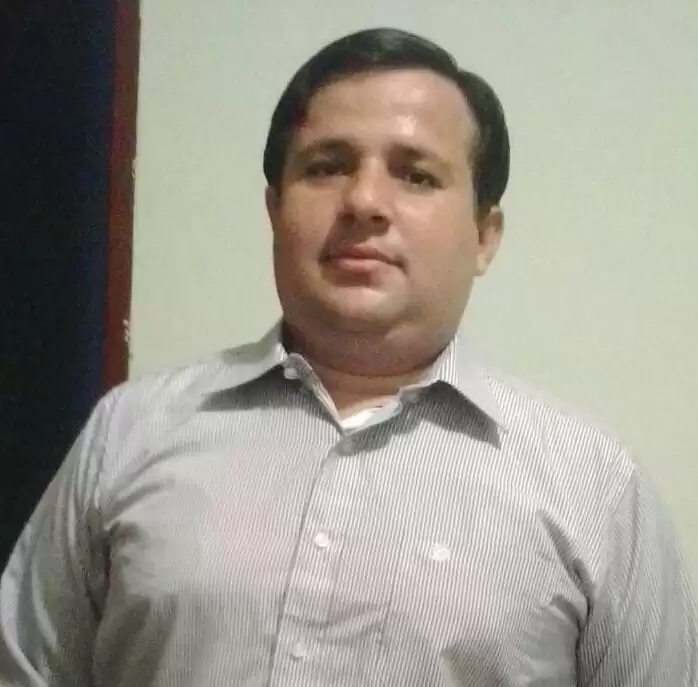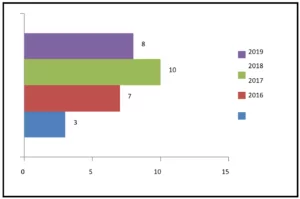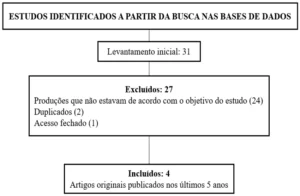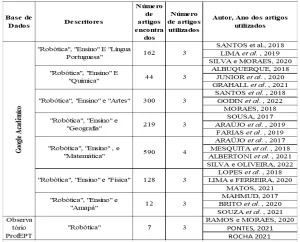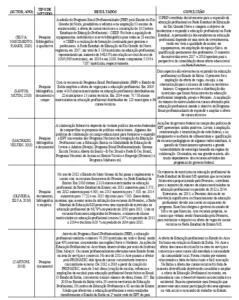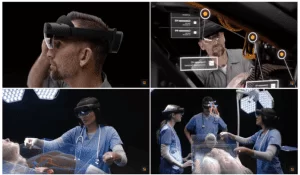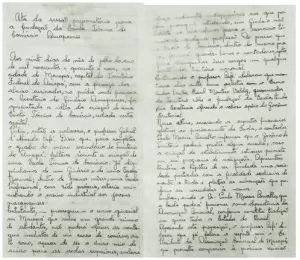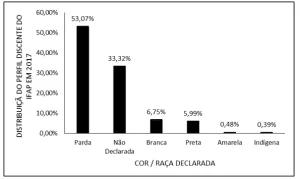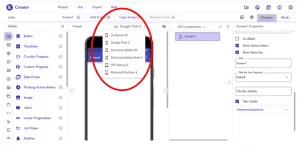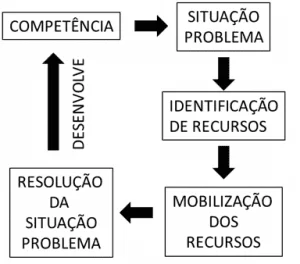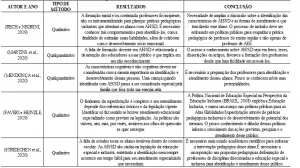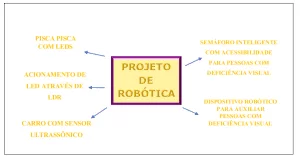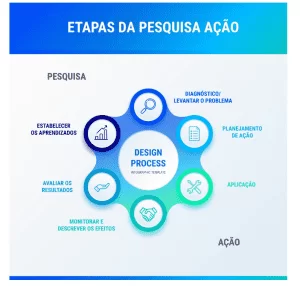SILVA, Leston Junio dos Santos [1], AMARO, Diogo Alves [2]
SILVA, Leston Junio dos Santos e; AMARO, Diogo Alves. Benefits And Method Of Teaching Of Futsal In The Elementary School: Literature Review. Multidisciplinary Core Scientific Journal Of Knowledge. Year 01, Issue 11, vol. 10, pp. 222-248. November 2016. ISSN: 2448-0959
SUMMARY
This final project sought to identify the benefits from the practice of futsal in elementary school, as well as the teaching methodologies adopted by physical education teachers. Sought to observe, futsal while Brazil's most popular sport and highlight your relevance for body culture of school movement and your consequent influence on cultural learning and students ' motor. The predominant characteristics qualitative work, using articles published in magazines and available on the internet. The methodological procedures were based on literature review. It is observed that the development motor has great importance in the formation of the child and with the help of the futsal sport can work well this development.
Key words: indoor soccer, Benefits, physical education, learning, methodologies.
INTRODUCTION
The central objective of this study is to investigate the benefits and methods of teaching soccer at school. Specifically, we try to understand the theoretical and methodological foundations that support the proposal of sports education in the elementary school. Search in particular, identify the constituent elements of reality and designed by students in the school context.
What supports/legitimizes/justify the teaching of futsal sport in school on teachers ' perspective? Goals and pedagogical perspectives take on teachers to teach futsal? As the students understand and interpret the content of what they learn in school sports? The analysis of conceptions are made from a theoretical clipping emphasizes different perspectives identified in literature for teaching soccer at school.
Interpret different theoretical productions and understand the pedagogical mediations made by professors allows understand the assumptions that underpin the teaching of futsal in school.
For Voser and Giusti (2002), the teaching of futsal sport in school is an important element in that it puts as a means of health promotion and education of children. According to them, the sport has been incorporated in school as a way to provide a good learning, favoring the development of the physical, psychological and social aspects.
The school plays an important role with regard to the acquisition of the habit of sports for children. Schools that really invest in education recognize school physical education a fast child's interaction with the environment in which he lives, offering moments of social conviviality. Serious proposals which aim to democratize, humanize and diversify the teaching form of physical education and teaching methods that seek to enhance and incorporate the affective, cognitive and socio-cultural dimensions of the students is becoming a reference significant educational context, especially at the hour of choice on the part of the parents, the best school for their children (VOSER & GIUSTI, 2002, p. 15).
According to Junior (1998), understanding and learning of futsal, as part of training in the early stages, must be present and understood clearly and objectively, directing teaching mode with educational variants, with elements their own understandings. Bello Junior (2008), discusses the teaching of futsal in school, in a perspective linked to biological aspects, as the motor development and certain health problems. For Junior (1998, p. 71):
Futsal must be regarded as a sport, with different purposes acyclic. He is acyclic due to its variables throughout your move. Players at all times perform actions aimed at breaking a fiercer, trying to stand out individually. As in any sport, the school becomes a fundamental phase in the lives of children, called basic training by some experts, so we must work the motor development, postural defects corrections, etc.
Mutti (2003), in similar pedagogical position, i.e., traditional, understands that Futsal is the mode that allows to work a set of technical and tactical aspects of the game, quick thinking, motor skills, social issues, cooperation, respect and leadership. According to him, in the process of learning about the sport of Futsal, children experience and go through various learning situations.
Kunz (2006), on the other hand, believes that it is necessary to build a pedagogy for the physical education and sports education centered on a critical design-emancipatory. This should promote the teaching of sports and games, marked by a sense expanded, incorporating ethical dimensions, and expressive of human movement aesthetic. Overcome the merely instrumental and technical dimension of sport education becomes for him the big challenge in the practice of sport education futsal. Kunz travels within the critical theories to think a sports educational pedagogical proposal thinking them in your educational dimension.
In this study are addressed, in a first moment, the different traditional and critical studies-about futsal in school education, and then discuss the differences between these, then analyze the conceptions and practices of teachers about the sport. The same has been characterised as a survey of exploratory type. In the first step of the investigation, contacted with the directions of the schools, and requested permission for the conduct of this study. In the second stage performed the physical education teachers of the 8th grade and 8th grade research proposal. In the course of carrying out the lessons were made in a third leg were made questioning with teachers.
The work of physical education in the elementary schools is very important in that it allows students with a magnification of vision about the culture of body movement, and thus enables autonomy to develop a personal practice and the ability to interfere in the community, whether in service or in the construction of spaces of participation in cultural activities such as games, sports, wrestling, gymnastics and dance, leisure purposes, expression of feelings, affections and emotions. Resinificar these elements of culture and build them collectively is a constant and responsible participation in society.
1. METHODOLOGY
Methodologically, this work has adopted the method of bibliographic research for the investigation of the issue, using the exploratory type, performing extensive bibliographic survey in order to serve as theoretical framework to deepen the concepts used and ratify the position defended here.
Systematic search was performed of scientific articles in the database of the LILACS, SCIELO and Google Scholar. The bibliographic survey was carried out in the period January to July 2016. Defined as limits of searching articles, published between the years 2000 the 2016. The keywords used in the search were: physical activity, futsal, benefits, children, elementary school, teaching methodology.
The inclusion criteria for the study were found to approach the benefits of futsal in the children's education. Excluded studies that addressed the futsal in their other variables, but not addressed the practice of futsal in the children's education.
1.1 BENEFITS of FUTSAL
The ability of the individual has to control his movements only be acquired over time. The continuous change that occurs in the behavior comes from the interaction between physical and mechanical requirements, the biology of the individual, which includes nature, heredity and the intrinsic factors, and physical and socio-cultural environment, related to the experiences, and thus a dynamic process where the motor behavior arises from the various concepts that relate to the behavior (CAETANO, 2005).
The environment in which the child relates becomes essential for your full engine development, and exploitation of that environment is influenced by the possibilities of movement, to adapt to different conditions satisfactorily brought by Middle (2010).
The school is a place of discovery, where social, cultural experiences, educational and individual, are stimulated as soon as the child is in environments different from what you're used to when you're with your family. A space and a time in which the development of the child, the world in which you live and your subjectivity to be integrated to the social contexts that involve, through experiences that are oportunizadas and the encouragement of experience them in this phase of training the child (BASEI , 2008).
The movement can be understood as an activity, in the case, which is manifested through the game, sport, dance or gymnastics. The Gym has a middle and an end to achieve your educational goal within the school context related to the movement. The school usually takes the sport education as a strategy, and it is easy to see in every institution, even if she doesn't have a suitable structure for this practice (BELLO JUNIOR, 2008).
Physical activities within school bring improvements in aspects such as self-knowledge, body awareness, spatial and temporal that the child is, the potentiation of some mental processes, beyond the field of motor skills and physical This is all being worked in physical education classes, always with the individual and collective concerns of the students (CONEGLIAN and SILVA, 2013).
The sport which has been played in schools, has represented only in content and standards rules, where the game is accomplished by their rules and appropriate spaces. Taking this into account, it becomes difficult to opportunity to experience other movements, which could be creative developed for children, according to your needs. Thus, it has been essential that the sport is regarded as an important source of knowledge that the student should possess, in addition to the importance of what he's contextualized as social practice in physical education classes. In this way, the teaching of sport in the school context should no longer be based only on techniques and rules of the game (EARTH, 1996).
Futsal has become one great tool that teachers have in physical education classes, taking into account that it allows the exploration of various skills according to educational objectives. Most of the time the game is started at the school in a phase of life in which children and adolescents are facing both biological changes, as psychological and social. Therefore, it is extremely important and it is up to the Physical education teacher to stay tuned with the mode by which the sport is taught to children (JOSÉ JUNIOR et al., 2010).
The practice of sports, considered as content in school physical education classes, it is imperative that the opportunity of sports experience by the students, for the integral development of children and adolescents. Futsal is a sport that brings some ease to run since it just needs a ball, a space and players for a game. Among the sports practiced futsal is very popular and has gained the preference of many (CONEGLIAN and SILVA, 2013).
In cognitive, affective and social contexts, the physical education brings a very positive impact on knowledge as a whole, that is, fully in the life of the human being. In addition, it is essential to agree that the child fully developed and stimulated by movement, features improvements in building a healthy life development, creating a harmony between body, mind and spirit (OLIVEIRA, 2002).
In their classes, the physical education teacher should not treat the teachings of futsal just in order to teach the technique, but must prove able to work all the different aspects that will be of extreme importance to the overall development of children and adolescents, and can develop cognitive, motor skills, social, and psychological (CONEGLIAN and SILVA, 2013).
The actions of individuals, when considered collectively, bring the need for dynamic strategies tactics of the team, you have to adjust to win the strategies that the opposing team will form. However, the particularities of the game also impose several challenges to the education of children and youth training. All these dimensions explain the incantation that football exercises and why your great popularity among all. Aspects worked in football skills and emphasize the individual technical capabilities as well as pre-established tactical coordination. However, it is still not devoted attention to the development of the processes of perception and decision-making, particularly in the context of tactical (FIGUEIRA and GRECO, 2008).
Physical education, which brings a broad space for the discussion of conflicts between existing values within, proves your mandatory role participant in the development of the whole child. Is the importance of physical education in the professional training process which should knowingly assume and put into practice the role of mediator and Advisor in the integral development of children, serving as a base and reference (GUIMARÃES, 2001 ).
The indoor soccer, or futsal, is a sport that brings in a lot of dynamism, with various situations, they bring important contributions to the development of children, are just needs strength and speed, but also coordination and especially, tactical intelligence, which reveals itself in the relationship between the perception and decision-making needed to solve the problems presented in the game. These elements appear during the games in individual moves, in plays of small groups of players and tactics team plays as a whole (FIGUEIRA and GRECO, 2008).
The engine development is a process of changes in the level of functioning of an individual, where a greater ability to control movements is acquired over time. This continuous change in behavior occurs by interaction between the requirements of the task (mechanical and physical), the biology of individual (heredity, nature and intrinsic factors, structural and functional restrictions of the individual) and the environment ( sociocultural and physical, learning or experience factors), characterized as a dynamic process in which the motor behavior arises from several restrictions that surround the behavior (CAETANO, 2005).
It is extremely important that the physical education teacher understands well what is the child, as she moves like learn and as manifested their emotions and feelings. It is in light of these characteristics that the teacher will establish the goals of the content and the method of teaching to be placed for children. The teacher should always work according to the stage of motor development, always looking for the best quality control of the movement of the child (OLIVEIRA, 2002).
The motor development is considered as a sequential process, continuous and related to chronological age, by which humans acquire a huge amount of motor skills, which progresses from simple movements and disorganized for the implementation of highly organized and complex motor skills (WILLRICH, 2009). The engine development is a process of changes in the level of functioning of an individual, where a greater ability to control movements is acquired over time. This continuous change in behavior occurs by interaction between the requirements of the task (mechanical and physical), the biology of individual (heredity, nature and intrinsic factors, structural and functional restrictions of the individual) and the environment ( sociocultural and physical, learning or experience factors), characterized as a dynamic process in which the motor behavior arises from several restrictions that surround the behavior (CAETANO, 2005).
Understand the development of motor skills is a content of motor behavior, understand the first attempts to get around in various forms and in various directions, to take the first steps and, later, jump and run action in kind fence, is therefore an activity motivating and challenging for researchers of human movement (OLIVEIRA, 2002).
Although futsal sports training is directed to the characteristics of the sport, the sports initiation the focus is more open and allows threads as fine Motricity, the global Motricity and the body schema are benefited. Are also enhanced other more generalized presence engines components in sports activities, such as balance, spatial and temporal organization, aiding in learning motor skills transfer more (rock, 2010).
It is very important to consider the children's motor development, because delays involve losses that can Motors extend until adulthood. Therefore, the risk factors for delayed motor development should be eliminated whenever possible (WILLRICH, 2009).
The motor development as a field of study and a sub-area of motor behavior, had your origin in the 18th century, based on two subjects, biology and developmental psychology, but is, as of 1928, she developed more rapidly and if independent due to the interest of many researchers in exploring this area. It is necessary to know and understand this approach of development of fundamental motor patterns to do this analysis (OLIVEIRA, 2002).
1.1 Futsal in elementary school
To join the practice of futsal, the kids become part of another form of socialization, in this case the teacher can work through three dimensions: conceptual, procedural, and atitudinal second Cavalcante (2013).
In procedural goals are that children in practice may have varied movements, rhythms, game situations and basics; already the conceptual, which should complement the above, aims to present the history of the sport, the modes of implementation in their correct forms, developing a criticality by the students, from the moment you have the knowledge. Already the atitudinal dimension develops in students their attitudes, their ethical and moral values, showing respect for colleagues, adversaries, teachers and parents, however, a work of cooperation between the other (by DARIDO and RANGEL, 2005).
Technical fundamentals, such as kicking, passing, dribbling, ball and driving, marking second Voser (1996), can be passed to the children, no matter what age you are, but must be through appropriate recreational activities according to the level at which the Group is. These forms of teachings provide the child lose his inhibiting with others, as well as the socialization and learning.
The teaching techniques in the years of learning should be taken for the playful side, with games that encourage children to like sport, according to Santana (2014). In the practice of futsal, the main attraction for children is the play, even if they are not developed sufficient skills for the game of futsal itself. However, if you don't have the game in futsal, the child will depart frustrated and so not appear more in training highlights, (MUTTI, 2003).
Thus Freire (2006, p. 36) points out that "the child when it comes to sports schools should continue playing sport, being the sistematizações for the purchase of should occur slowly, subtly."
For the understanding of the importance of physical activities and mainly for futsal elementary school child, you must report to us scholars who have proved that the development of the child is directly connected to the areas of psychomotricity, cognitive and affective areas areas, as we see in the studies of Balbé et al (2009):
The motor development represents an aspect of the developmental process that is intrinsically related to the cognitive and affective areas of human behavior, being influenced by many factors. The importance of motor development ideal should not be minimized or considered as secondary in relation to other areas of development. Therefore, the process of motor development proves to be basically by changes in motor behavior, the baby to adult, is a permanent process of learning involved in moving efficiently, in reaction to what we face daily in a world in constant modification (GALLAHUE; OZMUN, 2002 apud BALBÈ et al., 2009).
Research on the importance of child development in all areas is because, for the most part she favors for the child to acquire autonomy, not only physically, but also of body and mind. Antunes (2006) how to obtain the autonomy is one of the primary goals of early childhood education, in a continuous process, encouraging the child to interact with the learning environment and with the other, sports are excellent environment of learning in school and non-school spaces.
In this respect it is important that the teacher encourages and values the baggage that the child brings home the interactions on the street and leisure environments, and sports practices are part of the context of the majority of our students.
For Sayao (1999), the world in your back learning and interferes in child development:
The child, while historical subject, represents the various cultural manifestations singly to seize in their everyday activities in family, in school, in relationships that hangs with the adults, with other children, with the world. When you express yourself, makes your whole body, through the gestures, of orality. She's not a corporal now and after cognitive. In the game, the child is a unique being who demonstrates through his movements, a totality. Break it and fragmenting the ways that can take you to the construction of new knowledge, is disrespectful. (SAYAO, 1999, p 12).
The sport is without a doubt a social and economic phenomenon of first importance in the modern world. So has a influence to increase the participation of admission of children in sport, whether for the occupation of free time, like search for a healthy life or even as a profession. It is extremely important that we know what motivates these people to enter, stay or even to abandon the sport.
The motivation for the practice of sports is a fruitful way of psychological research, and your application of knowledge has been used by professional sports and physical activities. It is understood that it is necessary for a good development of acceptance and better learning of physical activities, a program related to the interests of individuals who participate in these activities. Although the sport is highly beneficial and exciting in all of its aspects, some people lose their motivation and interest.
Santos (2014, p. 11) States that "the futsal team practiced at school, to fulfill your educational role, must meet the student's realities, taking care to ensure that your practice can contribute to the social development of the pupil". The author reports that the futsal team within the school have to be well-planned contributing to a socializing character in which the student develop various skills.
Therefore, the same author above contributes saying the pedagogical practice of futsal is of great importance for the development of the students in, but at the same time, it is necessary to understand various possibilities of learning to achieve meet the difficulties encountered in the classroom.
Mata (2011, p. 16) think futsal,
As well as other content, should be treated in school physical education classes as a knowledge. Differing from the way you've been treated – as a sports. We understand that respected their phases of the subject, it is possible to provide a methodological way exciting, student and teacher are subject of a horizontal process, and in this way, both learn and seize more and better.
The author believes that futsal is worked in a different perspective of the traditional model, in which the physical education classes to maintain a constructive relationship on teacher and student, respecting the subject in educational level and in a context which it finds, develop a partnership of cooperation.
For Saints (2014), one of the basic functions of physical education teacher, then, is to consider some items to make your lesson plans, this based on a logical sequence of teaching. These are the items: the social context; the life experience and maturity level of the students.
According to Zafar and Gallant (2008) the National curricular parameters (PCN's) is one of the documents that regulates and supports the disciplines. In relation to physical education in high school this document CITES that the objectives must be outlined in a playful and educational way, using methodologies that will enable students to learn different content.
From this thought, the same author keeps saying a big negative point in physical education of high school of easy is the gap between theory and practice, which makes it difficult for teachers to understand the definitions proposed by the NCPS's for If you work within the practical lessons.
It is necessary, as a matter of urgency, that the teachers attempt to work with playful character content in high school; This could be favorable to increased membership and participation of the students in the practices of futsal in the playful enabling new experiences, seeking to create and develop capabilities which surpass the expectation of students (GUIMARÃES, 1980).
Faced, however, with the present within the schools, research findings show that always come up with new proposals for papers, but until then, the practices of the futsal team are still guided by a repetitive aspect, in a process editor and alienated. There are also several reasons that carry these issues of lack of interest of the students, they are: lack of spaces and structures, few materials, method and inadequate training, teachers among others (MOYA, 2008).
As Moya (2008), Curricular guidelines, in one of his roles, propose that the physical education professionals do a transformative physical education running a pedagogy that can transform social relations through their practices , in which students can, through them, learn to respect the difficulties and differences found in their classes.
Serpa and Niece (2015) believe in a pedagogy that there might be a coparticipation in decision-making class, because the lesson plan cannot be something defined, there must be a method in which the main focus is meeting the needs of students.
The same author reports that still is a lack of teacher's pedagogical responsibility if he seeks to enhance practical activities geared only to routine practices, it is necessary that the teacher use differentiated activities and search for materials for alternative, apart from practice, activities that value the participation of all.
Haas (2013) places the planning as a new perspective, because the teaching of futsal has to include a participatory planning and maintain a dialogue that can provide lessons for the cultural and social life, allowing, thus, develop concepts and values characterizing the method as a tool in training as a critical support to develop pupils ' autonomy.
Finally, Serpa and Niece (2015) conclude that within a critical pedagogical perspective-emancipating, teachers have to make reflections directly and together with students, using a diagnostic analysis if necessary changes to the upcoming classes, to occur a coparticipation of same in teaching and learning.
1.3 Methodology introduced in the teaching of futsal
It is believed that the futsal team should be taught in school, as part of a knowledge treated by physical education named body culture. That is, through this sport, the human being also established a relationship of Exchange and interacted with society.
Accept the body culture as knowledge of the area of the physical education, brings new theoretical-methodological contributions about the Organization of knowledge.
The human being must be regarded as a subject of historical process of humanization, so, this idea must be transported to the scope. Due to the critical perspective-the raised by collective of Authors (1992), defending the idea of historicity of human body, she was used as a base to support this work.
This is consistent with the perspective that, according to Bracht (1997), is the model of sports education in the school context, where we find as the basis of learning the sport of yield characteristics, making it embedded into the school values such as: income, competition, remember, rationalisation and cientificarão.
The school must adopt new methodological postures, developing a reflection on the student on the knowledge being taught, so that he develops an understanding of the area in your entirety, enabling you to perform a reading of reality.
Thus, it is clear that we need to adopt a new attitude in front of the sports education that needs to go through a reworking, in which you can adopt different meaning of the current model.
Second Daolio (2002), sport, in this case the futsal, needs to be seen as an element of culture that transcends technical instrumental dimension. He must be seen as a cultural-historical phenomenon, so that's why it must be analyzed anthropologically and not just bio-mecanicamente.
This research produces theoretical strategies on teaching of futsal, starting from the idea that this modality is a form of body language, which is used as the language.
The development of this method has an experience in which the sport was studied and applied outside the school context. It is believed that this experience can be transported to the school context because it is not faced with a restriction on the sex or the chronological age, and also because it features the same theoretical foundation.
It is believed that it is possible to run sport efficiency mold, placed above, adopting new stances. The important thing is to emphasize that the sport should not be ignored and thus, not taught in school, because it is a right of the students to acquire knowledge about him.
According to Kawashima and white (2008, p. 02) physical education is:
A pedagogical discipline permeated of thinkers and teachers concerned with improving your pedagogical treatment in the school context. Teaching procedures are the most diverse and complementary, since all the school caters to society, and society is to deal with socio-cultural contexts, as well as significant physical characteristics and development that each student features. The basic idea is that the professor, to teach at the school futsal, must have knowledge about the teaching procedures and choose the most suitable for the reality of your school and each class that works.
There are numerous ways of presenting educational procedures as well defend the author above, for both have knowledgeable teachers of these forms is the first step to practice pedagogy with quality, and in this context the futsal school knowledge should be inserted.
B (2002, p. 60) describes it:
As the main facilitator of the teaching of futsal, we stress the importance of the game in the process of formation of the student. The game is the most widely used teaching procedure in school because it requires few materials, what is already known is scarce in schools. Through the game, the society develops, the student is motivated to learn, skills are improved, develops creativity, cognition and learn to solve problems and make decisions. Besides stimulating the inclusion and the development of multiple intelligences, among others.
The physical education teacher having knowledge of using games as a pedagogical method must include futsal, this being a game that promotes the development motor as psychological practitioners. The game is a means of socialization and adaptation to learn to deal with the differences of the Middle, be or not school.
Students in the early years are open to knowledge and it is for the teacher to use this opportunity to promote the practice of futsal as an instrument capable of taking the harmonic and conscious of their socializing duties and obligations in space and as a citizen.
Santana (2014, p. 89) points out that:
In the early years (first to fourth grade) it is important to work the playfulness. Especially in the early years of learning, must serve the recreational component. The games of children's culture have that feature. Practicing games already known, it becomes easier for the teacher to teach what the child doesn't know yet and must learn. The playful is the bridge. This attitude to learn with pleasure, playing, signaling for another: like how to learn sport, children can incorporate it in their lives.
When you teach using the playful in physical education classes, either in practice or not futsal, the student demonstrates greater participate be a method and makes teaching more attractive.
Kawashima and; White (2008, p. 03) complements by saying that:
Still in the first four years of elementary school, we stress the importance of not working content specific to each team sport, futsal, and Yes with elements common to all of them, so there won't be early specialization and the privilege of the technique.
The contents of the futsal lessons must be addressed so that the student can assimilate with satisfaction. It is important to use a teaching that does not render the discouraged teaching by teaching that is used.
According to Throat (2012), with games also relevaremos the game logic, so the technique is learned as a result of the games.
This is also the opinion of Paes (2002, p. 89), which complements bringing the team sports have common operating principles: offensive and defensive systems. This principle assumes that should be taught from the fourth grade and specific systems of futsal, from the fifth grade, using simple systems.
According to Santana (2014, p. 89) there are four types of motor activities to teach futsal:
The tasks that are experiences of gesture engine without concern for the technical improvement; the jokes that are games gifts in popular culture and children; the games, with space and number of players reduced, while preserving the unity of the game or not; and games adapted, when playing the whole block, you can change the number of players, with rules adapted and preserving or not the game unit (cooperation, opposition, submission and diversity).
It is important that the teacher is encouraged to build the games or activities for futsal learning at school. Schools seek theoretical knowledge and practice regarding the practice of futsal, so will contribute to the formation of the student beyond the school space.
We need to develop values that emphasize collectivism, pedagogical actions that allow the participation of all students with the same opportunities.
The program of sports in school physical education should stimulate, in addition to the practice, the understanding of physical activity, not with the end herself, but as a phenomenon by which man interacts with society and assigns meanings to these actions.
For Freire (2006) the teacher should always be researching what will teach their students, because without research there is so little education teaching without research.
According to Santana (2014) physical education teachers need not create teams in schools and yes enter futsal in the lives of students as something new in the practice of school physical education.
The school futsal team in schools must offer the integration and cooperation between students and the professor, this occurs in class must offer the recreational component, demonstrating that everyone can practice futsal and thought that only the best are provided practice futsal (SANTANA, 2014).
According to Dalai (2007) the teaching method to be used by the teacher in the classroom must be that futsal which will provide the interest of students in practice school futsal team, no matter if it is global, analytical or mixed.
The fundamentals that will be used in class futsal team should make students get taste for practice of futsal, so the student will perform with the facility being delivered even though he has never practiced the futsal (SANTANA, 2014).
According to Paul (2007) the fundamentals of futsal are specific movements for those who practice. Most of these movements is held possession of the ball, as the domain, control, driving, the kick, the header, the pass, dribble and protection. There are also movements performed without the ball, as finta, the markup and the anticipation, that that finta, brand and anticipates is not possession of the ball, but always aims to be in possession of the ball or at least touch her.
There are also the movements used by goalkeepers as handles low defenses, defenses high, pitches, scoring outputs releases, domain, passing, receiving, kick (DALAI, 2007).
Second Throat (2012) the physical education teachers should teach their classes assuming futsal always of easy to difficult.
Indicates work with students the invariants common to team sports, so the student learns what are the elements found in most team sports (an object to be driven or released, a space in which the game takes place, the members who assist in the progression, the opponents to be overcome and marked, a target to attack and defend), and not directly in a specialization.
It is important to put students in contact with various types of balls, and land targets, so that they understand the particulars between them and learn to adapt to these different situations. The intention is to make the student with the different parts of the body can handle several balls in different terrains and end at various targets.
In the beginning, individualism in the actions tends to prevail, thus it is necessary to place, without haste, the importance of the members of the team. It is the responsibility of the teacher, to encourage in students, the thought that with the help of colleagues is easier to beat a determined opposition. Thus, the individualism will giving rise to the collective thinking.
Also deserves great care, time to put the idea of opponents to be marked. That's because, with the intensification of violence, the duel between the two teams ends up crossing the line. From the outset it is important to make students recognize and appreciate colleagues opponents because, according to Throat (2012), football is a game of opposition, without them there is no game.
FINAL CONSIDERATIONS
The sport must be thought in physical education classes as an element of our culture we must do this in between, with established educational objectives, so that is not just for "leisure" of students, to relax, but that the sport is exploited with all its possibilities, providing more elaborate knowledge, overcoming the vision of common sense that is strongly demonstrated in the physical education classes.
Currently, students must be able to create, build, reflect on your actions consciously and critically, and to this end, the teacher must have strategies that make students feel the need to get the answers to the problems, and so both should always discuss, analyze, and participate in each content so they can build knowledge
The current proposal of the methodology of physical education for the students of the children's education in school is to get the teacher can create situations of education, contributing to the student reflect on what you're doing, you know why and how held such movement or activity, not simply do it, but understand what happens in the process as a whole. The student is seen in your entirety, being understood as a complex that you know have arguments for choosing paths, make their own attitudes and be socially recognized.
Futsal is a valuable tool for teachers of physical education in school, and can be used in different ways according to the broader educational objectives.
From what has been exposed and on the basis of the theoretical reference, an important benefit of the practice of futsal is the motor development, and this is extremely important to the overall growth and development of the child, once a child into the have good motor skills, will have greater success in sports and, consequently, will have greater capacity to perform everyday tasks in adult life.
And one of these experiences is the motor sports initiation, which if applied with a correct methodology, avoiding premature specialization of the child and providing recreational and creative activities that allow the exploration and discovery of movements, can assist in the learning of fundamental motor skills, which are essential for the practice of sports and to everyday life.
In this context, the practice of futsal can be very beneficial to the motor development of children as a way of driving experience. However, initiation to football should be held properly, respecting the degree of development of each student, satisfying their needs and interests, and above all, giving the child a repertoire of motor skills rather diverse.
The sport is a knowledge to be taught in physical education classes and that can contribute to the formation of critical/reflexive subjects.
Finally, it is understandable that the activities with games reveal the importance of this instrument as a pedagogical resource of teaching and learning, showing that the game arouses interest, motivation and involvement of the participant with the activity, positive interpersonal relations and interactions provides numerous benefits for health and psychomotor development of the child.
REFERENCES
AGARWAL, c. interpersonal relationships and self-esteem – the classroom as an area integral growth. 4. ed. Petrópolis: Vozes, 2006.
B, h. f. collective games and multiple intelligences in the interface of the relation between man and environment. Sport as a factor in quality of life. Piracicaba: UNIMEP, 2002.
BASEI, Andreia. Physical education in early childhood education: the importance of the move and their contributions in the development of the child. Revista Iberoamericana de Educación, Santa Maria. n. 47. Out. 2008
CAETANO, Maria Joana. Et al. Motor development of preschoolers in the range of 13 months. Brazilian magazine of Kineantropometry and human performance, v. 7, no. 2, p. 05-13, 2005.
Collective of authors. Teaching methodology of physical education. São Paulo: Cortez, 1992.
CONEGLIAN, Juliana; SILVA, Eduardo. The importance of the practice of futsal in physical education. Digital Magazine. Buenos Aires. paragraph 181. Jun 2013. Available in:<http: www.efdeportes.com/efd181/a-pratica-do-futsal-na-educacao-fisicaescolar.htm="">.</http:>
By DARIDO Shodhan, Cristina. Physical education at school: issues and ideas. Rio de Janeiro: Guanabara Koogan, 2005.
FILGUEIRA, F. M; Greco, P.J. Soccer: a study the tactical ability in the teaching process-learning training. Brazilian football magazine. v. 1, no. 2, p. 53-65. Jul/dez. 2008.
GALLAHUE, d. l. and OZMUN, j. c. understanding motor development: babies, children, adolescents and adults. São Paulo: Phorte Editora, 2002.
THROAT, j. For a theory de los Juegos collective Sports. In: funny,. and oliveira, j. (ed.). The teaching of sports games. 2nd ed. Porto: University of Porto, 2012.
GUIMARÃES, P.A. et al. School physical education: attitudes and values. Motives. v. 7, n. 1, p. 17-22. Jan. 2001/Jun..
GUIMARÃES, LUIZ ERNESTO. The teacher/student relationship in high school. Culture, 1980.
HAAS, Leandro Baptista. Futsal In School Education: The Pedagogical Perspective Taken By Physical Education Teachers. 2013. 36 f. TCC (graduation)-Physical education course, Unijuí, Ijuí-Rs, 2013
Junior, Jóse. et. Al. The pedagogy of sport as an educational approach in programmes of initiation to collective sports games. Digital Magazine-Buenos Aires. paragraph 140. Jan. 2010.
BELLO JUNIOR, Nicolino. The sports science applied to futsal. Rio de Janeiro: Sprint, 2008.
KAWASHIMA, L. B; White, M. The pedagogy of futsal in the educational context of the school. Digital Magazine-Buenos Aires-Año 13-N° 119-April 2008. Available on the website: < http://www.efdeportes.com=""> </>. Access in: 29 October 2016.
KUNZ, Elenor. Didactic-pedagogical transformation of the sport. Ijuí: Unijuí, 2001.
KUNZ, Eleanor. Physical education: teaching and changes. 2 ed. Ijuí: Unijuí ed., 2006.
MATA, Marcelo Batista da. Futsal in school: the traditional perspective to critical perspective. 2011. 37 f. TCC (graduation)-Physical education course, State University of Londrina, Londrina, 2011
MOYA, Leisi Fernanda. The Teaching Of Physical Education In High School: Approximations On The Performance Of The Professionals In State Schools Of Londrina. 2008. 139 f. Dissertation (maester)-postgraduate course in education, State University of Londrina, Londrina, 2008
MUTTI, d. Futsal: from initiation to high level. 2 ed. São Paulo: Phorte, 2003.
OLIVEIRA, g. de c. Psychomotricity: education and re-education in a psychology approach. 12 ed. Petrópolis RJ: Vozes, 2002.
PAES, R. R. The pedagogy of sport and the collective games. In: Rose Jr., D.. Sport and physical activity in adolescence: a multidisciplinary approach. Porto Alegre: New Haven, 2002.
ROCK, Priscilla. The influence of initiation to sports training on motor development in early childhood: A case study. Journal of physical education/EMU-Maringá, v. 21, n. 3, p. 469-477, 3. trim. 2010
SANTANA, w. c. historical contextualization of Futsal. (2016) available at http://www.pedagogiadofutsal.com.br/historia.aspx. Access in 15-10-2016.
SANTOS, Luiz Fernando et al. Futsal As A Form Of Socialization: A Case Studies. In: IV Midwest Congress of sports science and sports science district Congress. 2010
Walter José dos Santos. Physical education in four lines: futsal as a factor of socialization among students. 2014. 38 f. Monograph (Specialization)-course of specialization in education, Utfpr, Mediatrix, 2014
SAYAO, d. t. (2002): "childhood, teaching practice of physical education and early childhood education", in: VAZ, a. f.; SAYAO, d. t., and PINTO, f. m. (ed.): body Education and teacher education: reflections on the practice of teaching physical education. Florianópolis: Ed. at UFSC.
SAYAO, d. t. Childhood, teaching practice of physical education and early childhood education. In: VALENZUELA, A. F.; SAYAO, d. t., and PINTO, f. m. (ed.): body Education and teacher education: reflections on the practice of teaching physical education. Florianópolis: Ed. at UFSC, 1999.
SERPA, Paulo Roberto; NIECE, Alberto Machado. The teaching of team sports in elementary school: futsal and volleyball. Journal of Interdisciplinary Dissemination, no. 5, 2015.
EARTH, D.V. Teaching critical-participatory sports and technical disciplines in undergraduate courses in physical education: analysis of the impact of education on handball. Universidade Gama Filho. Master's thesis, Rio de Janeiro, 1996
VOSER, r. c. initiation into Futsal. 2 ed. Canoes: ULBRA, 1996.
VOSER, Rogério da Cunha; GIUSTI, João Gilberto. The Futsal And The School A Pedagogical Perspective. 2. ed. Porto Alegre: New Haven, 2002.
WILLRICH, Aline. Et. Al. Motor development in early childhood: the influence of risk factors and intervention programs. Neuroscience magazine v. 17, no. 1, p. 51-56. 2009
ZAGO, Nathalia; GALLANT, r. physical education in high school: ideas and reflections. In: II Studies Seminar in school physical education, p. 375-392, 2008.
[1] Student in physical education of College Patos de Minas (FPM) forming in the year 2016.
[2] Professor of the course of physical education in College Patos De Minas. FPM.
